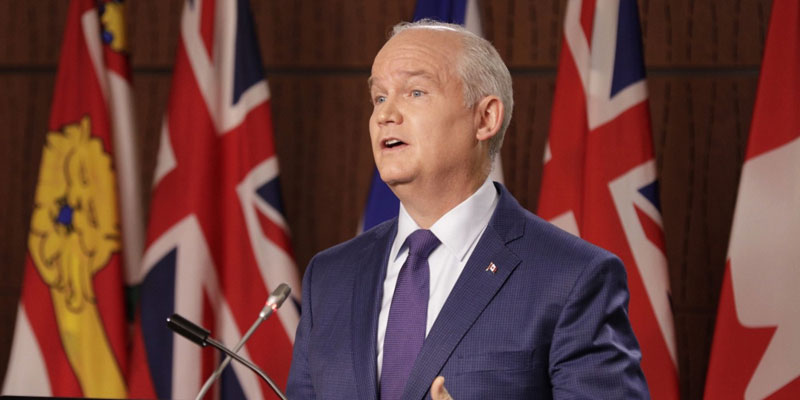Conservative climate plan falls flat

Last week, Conservative Leader Erin O’Toole released a new climate plan called “Securing the Environment,” which includes a price on carbon. This is good news, as reducing greenhouse gas (GHG) emissions remains a priority. But as always, the devil’s in the details. Instead of correcting flaws in the Trudeau government’s carbon plan, the new Tory plan simply swaps one poorly designed carbon tax for another.
For example, the plan introduces a $20 per-tonne carbon tax on fuels, increasing gradually to $50 per tonne (no details yet as to when and how) coupled with something called a “Personal Low Carbon Savings Account.” Essentially, a person earns points when they pay the carbon tax, then gets a rebate to buy things (electric vehicles, transit passes, efficient furnaces, etc.) that lower GHG emissions. Instead of channelling carbon tax revenue into direct lump-sum rebates to households, as is currently the case under Ottawa’s plan, the Conservative plan would divert revenue to these low-carbon personal accounts, which can be used for environmentally-friendly purchases.
The plan will also cap the carbon tax on consumers at $50 per tonne, far lower than the federal government’s current plan where the tax will increase to $170 per tonne by 2030. Nevertheless, to achieve similar emissions reductions, the Conservative climate plan introduces a new package of regulations including a zero-emission vehicle mandate, renewable gas mandate and low-carbon fuel standard.
It’s widely acknowledged that putting a price carbon is the most cost-effective way to reduce emissions, as it provides flexibility to individuals and businesses to either pay the price of emitting or find cheaper ways to reduce emissions. Critically, however, several key conditions must be met for carbon-pricing to be efficient (i.e. least costly).
First, carbon-pricing should be “revenue neutral,” which means that to mitigate damage on economic growth, revenues from the carbon tax should be used to reduce other more harmful taxes such as personal and business income taxes. Second, carbon-pricing should replace emissions-related regulations—layering a tax atop existing regulations, as the Liberals have done and the Tories propose, increases the cost of emissions reduction.
The current federal carbon-pricing plan does not return revenues from the carbon tax in an efficient growth-enhancing way. And it did not replace existing emissions-related regulations—and also added new ones. The Conservatives had the opportunity to correct such design flaws but instead produced a plan that mimics some of the Liberal flaws and introduces some new ones.
Specifically, instead of using carbon tax revenues to reduce other more harmful taxes—something several Scandinavian countries have done—the Conservative plan channels carbon tax revenues to the Personal Low Carbon Savings Account while also subsidizing new “green spending.” These personal savings accounts would add complexity, administrative and compliance costs, and grant yet more power to bureaucrats to determine what qualifies for purchases from such accounts.
Put simply, the Conservative climate plan relies less on market mechanisms and more on government regulations and bureaucracy.
Overall, a well-designed carbon-pricing plan can benefit Canada’s economy and environment. But neither the governing Liberals nor the opposition Conservatives have delivered anything close to such a plan.


